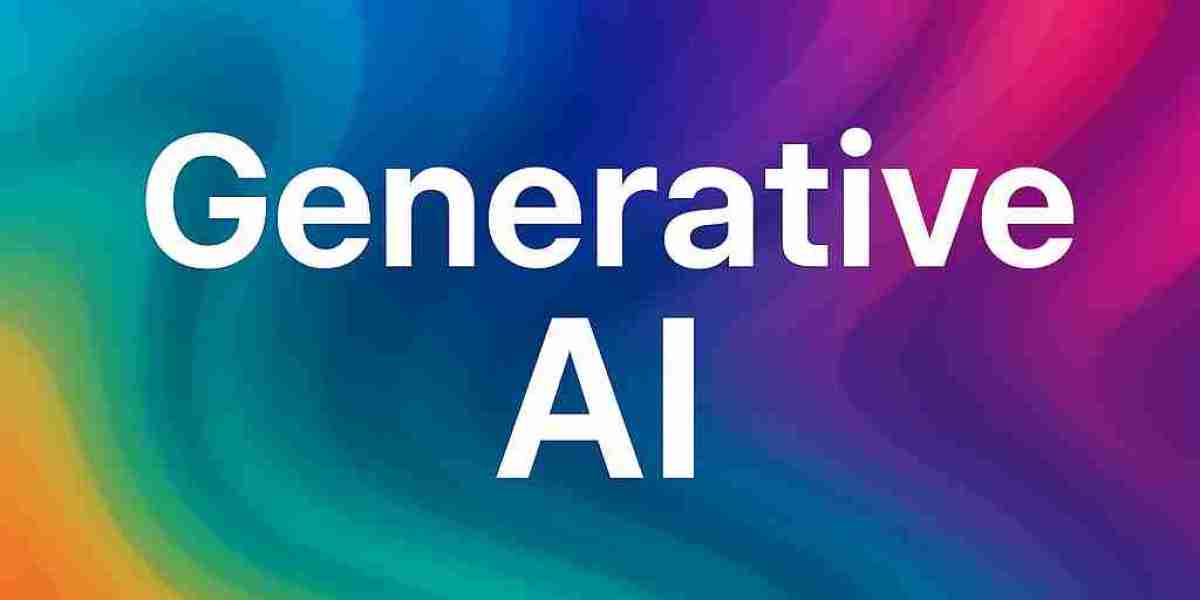Generative AI is a powerful branch of artificial intelligence that focuses on creating new content. Unlike traditional AI systems that follow predefined rules to perform tasks, generative AI is designed to produce original outputs such as text, images, music, and even videos. It learns from existing data and uses that knowledge to generate something entirely new and often creative.
The term "generative" refers to the ability of the system to "generate" data that closely resembles the patterns it has seen before. This is different from conventional AI, which might simply categorize, detect, or recommend based on the input it receives. Generative AI can actually create—making it one of the most exciting advancements in the world of technology.
How Does Generative AI Work?
At the core of generative AI are advanced machine learning models. Two of the most common types are:
- Generative Adversarial Networks (GANs): These consist of two neural networks—the generator and the discriminator—that work against each other. The generator creates new data samples, while the discriminator evaluates them. Through this constant back-and-forth, the generator gets better at producing realistic outputs.
- Transformer-based models (like GPT): These models, particularly popular for working with language, use vast datasets and deep learning to understand how words, phrases, and sentences are constructed. GPT (Generative Pre-trained Transformer) is one of the best-known examples. It can write essays, compose poetry, and even carry on a conversation.
These models are trained on massive amounts of data—from books, articles, and websites to images, music, and videos. The more data the system is exposed to, the more sophisticated and natural its outputs become.
Real-Life Examples of Generative AI
Generative AI is already being used in many areas of everyday life, sometimes without people even realizing it. Here are a few examples:
- Chatbots and Virtual Assistants: AI models like GPT can write emails, summarize documents, or answer questions in a human-like manner. These tools are helping businesses improve customer service and reduce response time.
- AI Art and Design: Tools like DALL·E and MidJourney can generate artworks based on text descriptions. Whether it’s designing a logo, creating a concept sketch, or imagining futuristic landscapes, generative AI is changing how designers work.
- Music Composition: AI systems can study thousands of songs and generate original pieces of music. These are even being used in video games and films as background scores.
- Video and Animation: Some models can now create short video clips based on simple prompts. While still in its early stages, this area shows enormous promise for advertising and content creation.
Benefits Across Industries
Generative AI isn't just a novelty—it offers real business value. Here’s how different sectors are using it:
- Marketing and Advertising: AI can generate content for blogs, social media, product descriptions, and even entire ad campaigns. This speeds up content creation and reduces costs.
- Healthcare and Pharmaceuticals: Generative AI is used to simulate and predict molecular structures, potentially leading to the faster development of new drugs and treatments.
- Education: Personalized learning tools can adapt to a student's progress and learning style. AI-generated content can include quizzes, practice exercises, or tailored explanations.
- Gaming and Entertainment: Game developers use generative AI to create characters, environments, and narratives. This allows for more immersive and dynamic gaming experiences.
Ethical Challenges and Considerations
As promising as generative AI is, it also comes with significant concerns:
- Deepfakes and Misinformation: AI can create realistic videos or audio clips of people saying or doing things they never did, posing serious risks in areas like politics or media.
- Copyright and Plagiarism: When AI generates art or writing, who owns the content? What if it mimics someone else's style too closely?
- Bias in Data: If the training data includes biased or offensive content, the AI can unknowingly replicate those biases in its outputs.
These concerns have led to ongoing debates about regulation, transparency, and ethical use. It’s crucial that developers and organizations remain vigilant and adopt best practices for responsible AI use.
Solulab’s Role in Advancing Responsible AI
Solulab, a leader in custom software development and emerging technologies, is actively contributing to the generative AI landscape. The company focuses on building ethical and scalable AI solutions tailored to business needs. Whether it's automating content creation or enhancing customer interaction through chatbots, Solulab ensures their AI solutions align with industry standards and societal values.
Their expertise helps businesses harness the power of generative AI while keeping safety and accountability in mind. Solulab’s commitment to innovation makes them a reliable partner for organizations exploring AI-driven transformation.
The Future of Generative AI
Generative AI is still evolving, but it’s already clear that it will play a central role in the future of work, creativity, and communication. As models become more powerful and accessible, we’ll likely see even more innovative applications.
However, it’s equally important to promote digital literacy and educate users about how AI works and what its limitations are. This understanding will help individuals and businesses use the technology wisely and responsibly.
In conclusion, generative AI is not just a trend—it’s a revolution in how we create, solve problems, and think about content. With responsible development and ethical use, it has the potential to enhance human creativity and reshape industries for the better.









